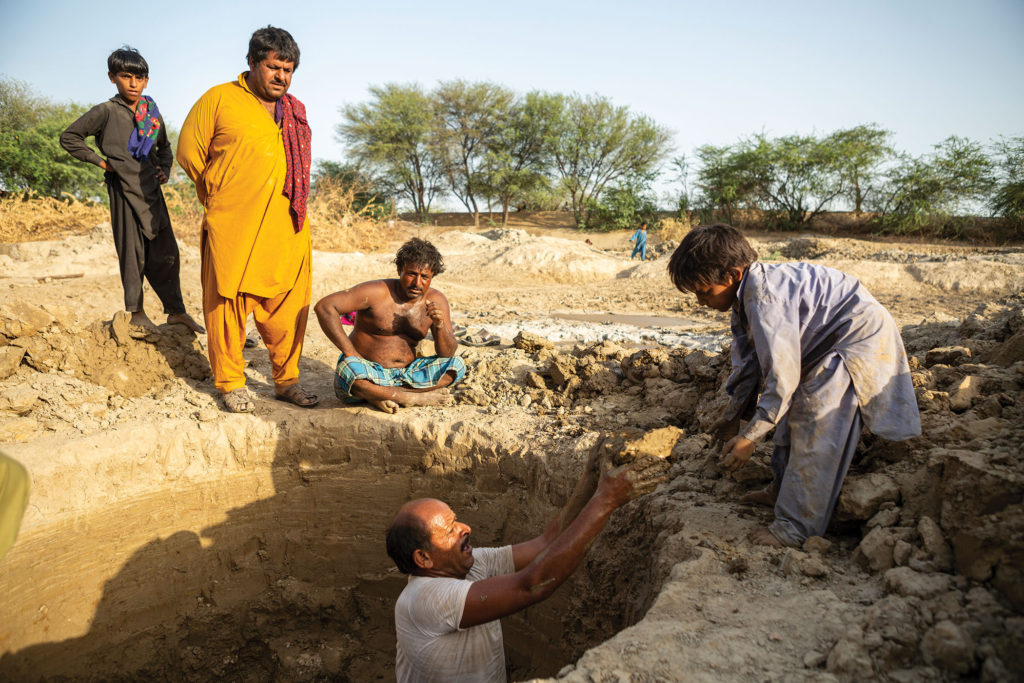Virdas: An Ingenious Water Harvesting Marvel of Banni’s Sustainable Landscape
December 7, 2023
In the heart of Banni, a remote expanse famed for its grasslands and one of the biggest salt deserts in the world, a testament to human ingenuity quietly thrives amidst the arid beauty.

Spread across 2,500 square kilometres, Banni presents a challenging landscape where daily life is a battle against soaring temperatures that can reach a searing 48 degrees Celsius. Yet, within this unforgiving terrain, the once-nomadic Maldhari community, skilled cattle herders who have now settled in Gujarat’s rugged Kutch region, have harnessed nature’s gift—the gift of fresh water. The virda system is their answer to procuring this life-sustaining resource, a solution that thrives even in a region where rainfall is a rare blessing and groundwater is brackish.1
The virda system is a network of strategically placed wells within shallow depressions called jheels. As jheels dry up, people dig deeper to tap subsurface water through an ingeniously evolved structure called virda. These virdas are the only internal source of fresh water in Banni grasslands.
Ramesh Bhatti, project director at Sahjeevan and a dedicated social worker with over two decades of experience in the region, revealed an intriguing aspect of the nomadic pastoralist communities in Banni. They had a practical tradition, a rule of thumb, which guided them to freshwater sources wherever clusters of desi babool (Vachellia nilotica) trees grew. Over time, they settled in these areas, forming close-knit hamlets known as vands. They also found that after rainwater infiltrated the soil, it was stored at a level above the salty groundwater because of the difference in their density.2


The creation of virdas exemplifies their profound sense of communal unity and their unwavering commitment to community service. This communal effort, known as Aabhat, entails collaborative labour and resource sharing. Two days prior to work, a community member whose virda is to be built notifies everyone, prompting a gathering of a substantial group on the day of the digging. The process entails the preparation of wood, typically sourced from the invasive ganda bawad (Prosopis juliflora), which is used to provide structural support to the virda. Initially, native babool wood was employed, but over time, the landscape has been dominated by the ganda bawad. Skilled diggers swiftly excavate the virda while taking precautions to ensure safety and prevent accidents.
The culmination of this process is a Jamanvar, where they cook and dine together, reinforcing their collective accomplishment and positive spirit. It is important to note that each virda is owned by an individual family, and in a village, a single family may possess anywhere from five to 15 virdas. While drinking water can be drawn from any virda if necessary, water for livestock must be sourced exclusively from one’s own virdas.3
[This is an excerpt. Subscribe to the digital edition or hardcopy to read the complete article.]
Read more stories from FuturArc 4Q 2023: Water!

Don’t miss out on our ongoing competition—submit your entries for FuturArc Prize 2024: Architecture for Life After … now!

1 Western Coastal Plains: Traditional Water Harvesting Systems. https://www.rainwaterharvesting.org/Rural/wcp_tradi.htm. Accessed 21 Sept. 2023.
2 Agrawal, Rakesh. ‘Water of Life’. Downtoearth, https://www.downtoearth.org.in/coverage/water-of-life-28919. Accessed 29 Sept. 2023.
3 Bharwada, Charul, and Vinay Mahajan. Let It Be Banni: Understanding and Sustaining Pastoral Livelihoods of Banni. Research Unit for Livelihoods and Natural Resources : Centre for Economic and Social Studies, 2012.
4 ‘In Banni, Only Saline Water to Quench Thirst of 20 Villages’. The Times of India, 2 May 2019. The Economic Times – The Times of India, https://timesofindia.indiatimes.com/city/rajkot/in-banni-only-saline-water-to-quench-thirst-of-20-villages/article-show/69134732.cms.
To read the complete article, get your hardcopy at our online shop/newsstands/major bookstores; subscribe to FuturArc or download the FuturArc App to read the issues.
